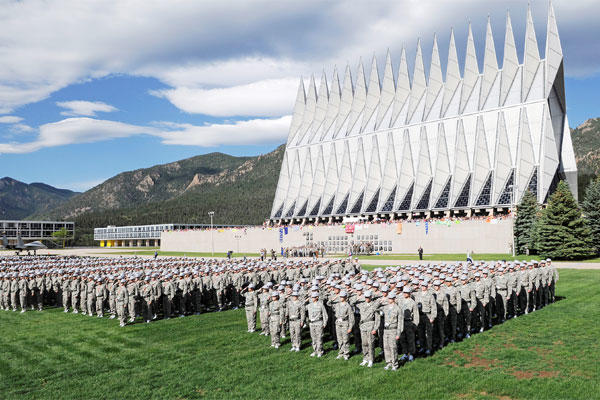U.S. AIR FORCE ACADEMY, Colo. -- The Navy has a promotional campaign warning against spice; the Army has allowed commanders to order mandatory drug-testing for the first time; and Airmen at the Air Force Drug Testing Laboratory are working to find ways to detect the substance in servicemembers.
Spice is a synthetic compound created in laboratories, it has properties similar to marijuana, and has been shown to be dangerous and deadly. Once sold legally, the drug is now outlawed in 45 states and in all four service branches, the result of users suffering from hallucinations, violence and organ failure.
Spice is reportedly gaining popularity among military personnel, but U.S Air Force Academy's Chemistry Research Center and the Chemistry Department have teamed-up to solve the problem.
To do this, they must answer two questions: How do they detect a new chemical compound in a routine drug test and how do they detect it for longer periods after a person takes it?
The results of their work have been promising. Last year, research teams discovered a common metabolite used in synthetic cannabinoids like Spice, a generic term used for all types of the synthetic drug mimicking the effects of marijuana.
Former Cadet 1st Class Alexa Gingras, now a second lieutenant, spent the summer of 2012 at the laboratory and discovered strategies to improve the sensitivity of the Air Force's drug tests and devised a shortened method of preparing urine samples for analysis. For her research, Gingras received the Moore Award, an honor presented to the cadet with the most influential summer research across all academic disciplines.
The Academy's spice research continues, with chemistry professor Dr. Timm Knoerzer and Cadet 1st Class Jacob Krimbill working to develop extended testing protocols for the drug with the goal of increasing analytical testing of samples.
Krimbill, a senior biochemistry student, first began researching spice in the spring of 2013. He also conducted a summer research project at Air Force Drug Testing Laboratory, where he assisted in devising new protocols to increase the rate at which samples can be tested. His research continued throughout the fall semester and he gave up part of the semester break to continue working on the project.
The pair are trying to find ways to detect spice metabolites even weeks after it's been used.
"One main component in spice (UR-144) is easily metabolized, but readily degrades either in the body or during the testing protocol," Krimbill said. "Our intent is to synthesize and test for the degraded metabolite which may ultimately lead to a more precise and sensitive test."
Getting to this point will take work.
"Once this particular metabolite breaks down, it takes on a different chemical makeup," Knoerzer said. "The standard test doesn't check for it. We're designing a test that will check for the degraded metabolite directly in urine samples."
But first, Krimball and Knoerzer must recreate the metabolite in the lab.
"How to develop the synthesis of the compound doesn't exist in literature," Knoerzer said. "You can buy it, but not in pure form. So, an inherent need exists to synthetically produce the metabolite in larger quantities and with better purity. So, that's what we're trying to do is take advantage of our skills as synthetic chemists."
But they don't expect to be waylaid for long.
"We have identified several alternative strategies and we are aggressively screening these methods for effectiveness," Knoerzer said. "We plan to present our findings at the American Chemical Society National Meeting in Dallas this March.
Both researchers believe their project could lead to a commercial product.
"I think drug testing laboratories would be interested," Knoerzer said. "But right now, we're focused on developing the system and publishing a paper on it."
The Air Force as a whole will benefit from the research, as will their Army counterparts, who are also working with the Air Force lab, the doctor said.
"It has real-world applications," he said. "It has Air Force applications. That's one of the things that makes this so inherently interesting. We're filling a void."



























